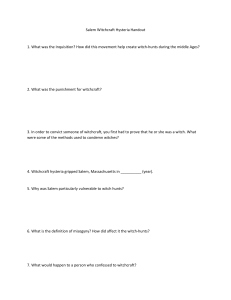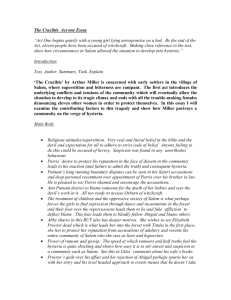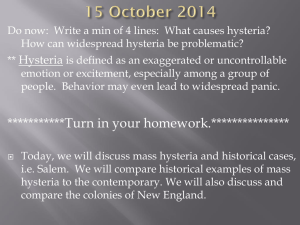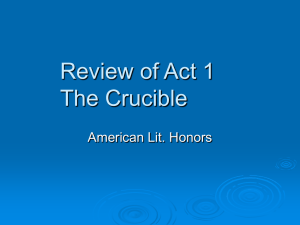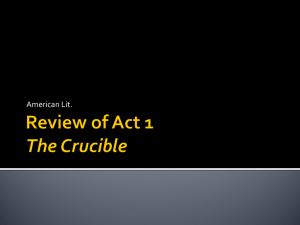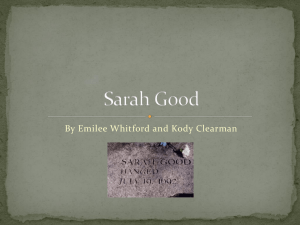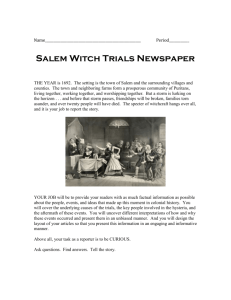APUSH Chapters 1-4 Study Guide: Identifications & Essays
advertisement
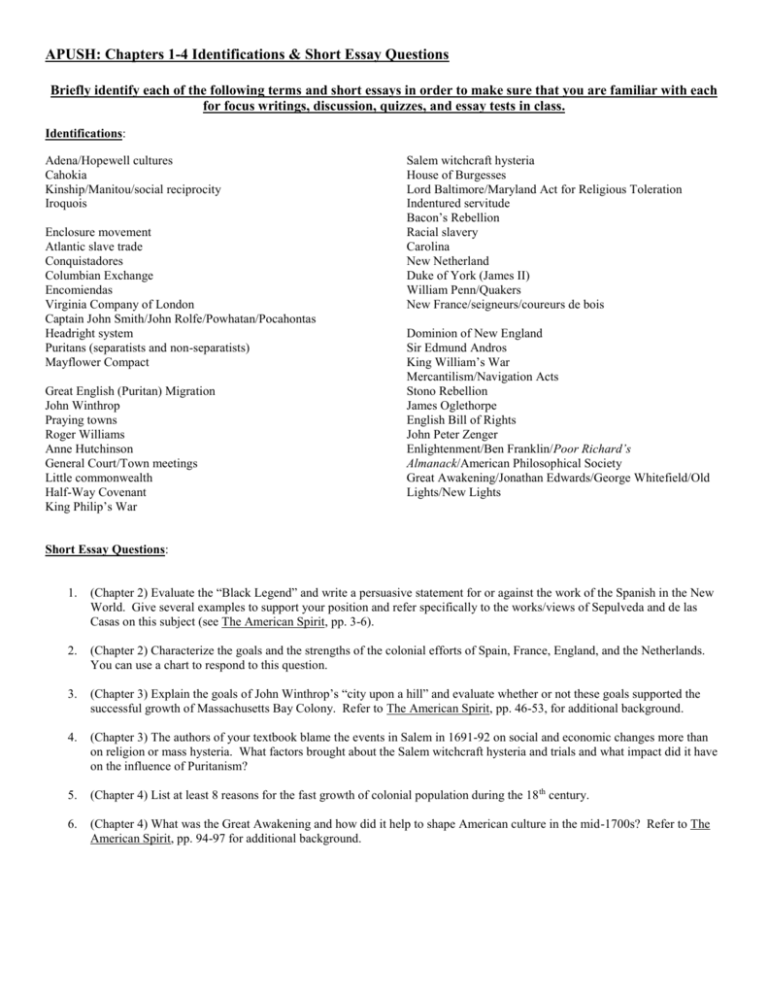
APUSH: Chapters 1-4 Identifications & Short Essay Questions Briefly identify each of the following terms and short essays in order to make sure that you are familiar with each for focus writings, discussion, quizzes, and essay tests in class. Identifications: Adena/Hopewell cultures Cahokia Kinship/Manitou/social reciprocity Iroquois Enclosure movement Atlantic slave trade Conquistadores Columbian Exchange Encomiendas Virginia Company of London Captain John Smith/John Rolfe/Powhatan/Pocahontas Headright system Puritans (separatists and non-separatists) Mayflower Compact Great English (Puritan) Migration John Winthrop Praying towns Roger Williams Anne Hutchinson General Court/Town meetings Little commonwealth Half-Way Covenant King Philip’s War Salem witchcraft hysteria House of Burgesses Lord Baltimore/Maryland Act for Religious Toleration Indentured servitude Bacon’s Rebellion Racial slavery Carolina New Netherland Duke of York (James II) William Penn/Quakers New France/seigneurs/coureurs de bois Dominion of New England Sir Edmund Andros King William’s War Mercantilism/Navigation Acts Stono Rebellion James Oglethorpe English Bill of Rights John Peter Zenger Enlightenment/Ben Franklin/Poor Richard’s Almanack/American Philosophical Society Great Awakening/Jonathan Edwards/George Whitefield/Old Lights/New Lights Short Essay Questions: 1. (Chapter 2) Evaluate the “Black Legend” and write a persuasive statement for or against the work of the Spanish in the New World. Give several examples to support your position and refer specifically to the works/views of Sepulveda and de las Casas on this subject (see The American Spirit, pp. 3-6). 2. (Chapter 2) Characterize the goals and the strengths of the colonial efforts of Spain, France, England, and the Netherlands. You can use a chart to respond to this question. 3. (Chapter 3) Explain the goals of John Winthrop’s “city upon a hill” and evaluate whether or not these goals supported the successful growth of Massachusetts Bay Colony. Refer to The American Spirit, pp. 46-53, for additional background. 4. (Chapter 3) The authors of your textbook blame the events in Salem in 1691-92 on social and economic changes more than on religion or mass hysteria. What factors brought about the Salem witchcraft hysteria and trials and what impact did it have on the influence of Puritanism? 5. (Chapter 4) List at least 8 reasons for the fast growth of colonial population during the 18 th century. 6. (Chapter 4) What was the Great Awakening and how did it help to shape American culture in the mid-1700s? Refer to The American Spirit, pp. 94-97 for additional background.


